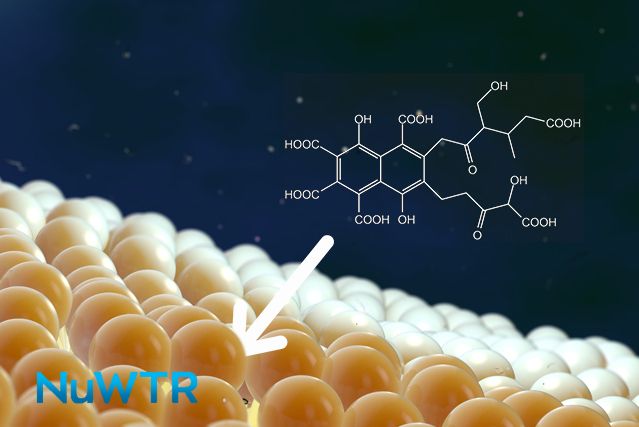WHAT ARE BENEFITS OF HUMIC AND FULVIC ACID FOR HUMAN CONSUMPTION?
Fulvic acid is a natural nutrient carrier. It takes nutrients and keeps them into the cell. In the cell, it binds the place of heavy metals and transports them out of the body. Fulvic acid is capable of doing so, because of the unique property that it is free to bind to nutrients and minerals. Besides, it's so small it can move through the cell membrane.
Fulvic acid is an extremely light liquid molecule. Pure fulvic acid is not attached. That means it has no minerals and metals attached. These two properties, their lightweight and the Free State of the molecule, make fulvic acid an excellent carrier of minerals, vitamins, trace elements and metals. The fulvic acid can travel from cell to cell, deposit nutrients and extract metals from the cell (see the box to see the effect of the fulvic in humans) The fulvic acid, as humic acid, is a generic name. It means that there are many products called fulvic acid. But not all products have the same quality. Some general rules for determining the quality of fulvic acid:
• Pure fulvic acid has a yellow color. The color shows purity.
• Fulvic acid should be as free as possible so that it can bind to nutrients. A good way to determine the purity of fulvic acid is taste. Fulvic acid must be tasteless.
• Fulvic acid is completely soluble. In water, therefore, it cannot constitute a deposit at the bottom.
Antiviral: Systematic research on the antiviral effects of humic acids began when it became apparent that some peat preparations had a healing effect against foot-and-mouth disease. Further studies demonstrated virus adsorption and synthesis blocking end effects in the case of multiple RNAs as well as DNA viruses. Humic acids showed selective blocking activity against the following viruses tested: Herpes symplex, coxsackie A9, influenza A, rhinovirus 1B, cytomegalovirus, HIV-1, HIV-2.
The reason for the adsorption blocking effect is probably the interaction of humates with the positive parts of the viral protein coat. The humate virus complex can not be adsorbed on the tissues.
Antibacterial: The antiseptic effect of peat preparations has been known for a thousand years; there are still hints from ancient Egypt. During the First World War, the best method for healing the wounds was the peat bandage. Further studies show that true antibacterial and fungicidal activity is related to humic acids. Many of the microbes were studied to take into account their humic acid resistance. The following microbes were found to be susceptible to humates: Staphylococcus epidermidis and aureus, Streptococcus pyrogenes, Salmonella typhimurium, Proteus vulgaris, Enterobacter cloacae, Pseudomonas aeruginosa.
According to the experiments, the effect of humates on microbes can be deduced on several grounds, firstly they can influence the catalysis of the metabolic reactions, but also a clear blocking effect on the bacteria and virus body was realized.
Complex Bowel Effect: Humic acids can form a protective covering on the intestinal wall, preventing irritation, diarrhea, and stomach ulcers. The oral use of humic acids increases appetite and reduces the desire for vomiting. In the case of acute gastroenteritis, humic acid may stop diarrhea in a few hours. In the case of hyperacidity, humic acid can reduce gastric acid production, while in the case of hypo acid, gastric acid production increases.
Detoxification: Humic acids have a definitive detoxifying effect against various cell toxins, mycotoxins, and toxic heavy metals. The uptake of toxins depends on the dose, time, and chemical adsorption conditions of the gastrointestinal tract. Humic acids, as strong chemical adsorbents, are able to inactivate the toxins. Many toxic molecules have been studied in animal studies in which humic acids were a very effective inactivating factor. Humic acids have an extraordinary ability that can not be observed on any other organic chelating molecule, namely, they form stronger complexes with the heavier molecular weight toxins. The toxins from these strong complexes can not be absorbed in the intestinal tract and are eliminated from the body.
Nature Product: Humic and fulvic acid for human consumption are produced in a natural way by the chemical and biological humification (degradation) of plant and animal matter and by the biological activities of microorganisms. They are complex molecules that naturally exist in soils, peat, oceans, and sweeteners. Our products based on Leonardite are the end products of a humification process of several million years.


Comments
Post a Comment